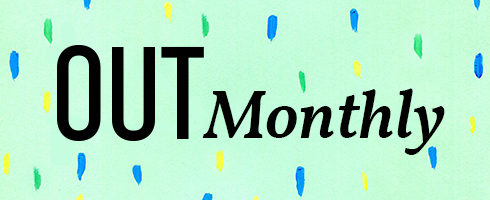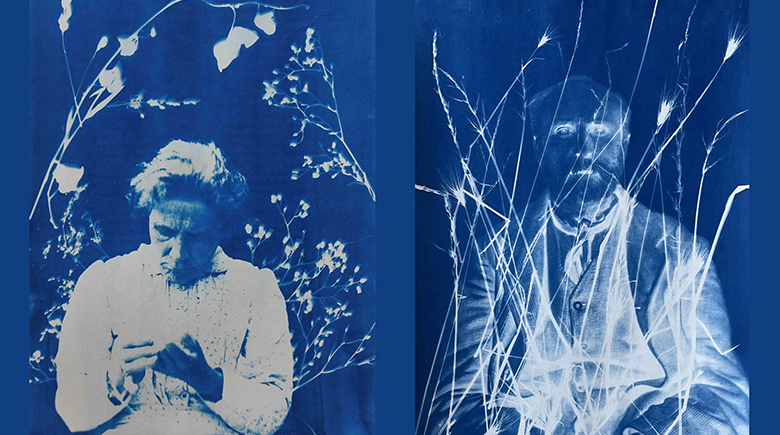Dr. Alana Harris, Director of Liberal Arts at KCL and Dr. Eric Fong, artist and former medical doctor are running a number of creative workshops using a cyanotype photographic printing technique where participants engage with both the portraits and painstakingly reconstructed life histories to reflect on changing attitudes to mental illness while exploring the role of nature in treatment and wellbeing.
We spoke to Dr. Alana Harris, a local resident, about this project plus other immersive initiatives in the community helping to raise awareness of Epsom’s ‘asylum’ history (the cluster of five psychiatric hospitals formed the largest facility in Europe) and restorative justice for the ‘forgotten people’ buried at Horton cemetery, in unmarked graves, on a derelict plot just off Hook Road (B284) at risk from private developers.
initially came to this as a historian. I teach at King’s; I work on life histories and gender histories and the extent to which many of those buried in Horton cemetery and indeed those confined to psychiatric institutions here in Epsom were women, immediately peaked my attention. The Friends of Horton Cemetery had already been going for a good couple of years – doing formidable genealogical research – and it was a short film produced by the Satisfied Eye Film Festival that drew my attention to the charity.
So, I asked how can I help and a few months later, we secured funding from Historic England to create the ‘Out of Sight, Out of Mind?’ project. With an objective to amplify the work already happening by the 50-60 volunteers piecing together the life stories of those buried, we’re encouraging more volunteers to join plus working across several public engagement programmes to help raise awareness.
Collaborating with Dr. Eric Fong with the cyanotype printing workshops at King’s served an extremely powerful message and we’ll be running these as local public workshops, too. Using site materials – the recovered glass plate negatives – together with nature therapy, enables a connection to the cemetery in a deeply profound metaphor because, right now, the only testament to the people buried there are the trees; their bodies are embodied in the trees.
The glass plate negatives, along with some medical records, were dumped in bin bags in a skip and discovered in the 90s after the hospitals shutdown. They were kept in an archive room but over time, everything salvaged started to hatch! Painstakingly disinfected, what’s left are fragmentary records; we’ll never recapture the 9000 lives but more than 500 biographies is pretty good going so far for a volunteer outfit.
While still a working cemetery until 1955, the NHS maintained it up to the 80s but when the estate was sold, all headstones and metal grave markers were removed.
We’ve also been holding Ceramic Flower Painting workshops; 900 decorated flowers to commemorate 9000 graves will be planted at a public event around the cemetery site in October to coincide with World Mental Health Day 2023. Using art therapy techniques, kids and adults get a life story and image on a postcard and are encouraged to engage in an emotional connection with that person while you paint. We’ve done about 400 so far. They’re all distinct and individual – just like the people they’re painted for. Local schools are also involved and we invited Freewheelers in Leatherhead – an inclusive theater group – to paint flowers too and work through some of the life stories which was phenomenally powerful and incredibly moving as a couple of participants noted that, “this would have been us a hundred years ago.”
People are really moved by the stories because they’re a stimulus to important conversations.
And it’s exactly these debates, about disability, stigma, mental health and the treatment of people in our past and how has this changed in the present, that these projects are encouraging.
It’s our history in this part of Epsom, something that Historic England have pointed out with it being the largest asylum cemetery probably in Europe, it’s potentially a site of national if not international significance but also admissions to these asylums were from all walks of life; all backgrounds, classes, variable mental and physical health issues and indeed poverty through circumstance. These are stories from the past and we need to contextualize them but they also echo loudly across centuries and are still so relevant to the here and now with how society works, how it treats people, how we treat ill fortune or bad health and ways we can learn from this. Their past is our present.”
Pictures: Cyanotype Portraits: Psychiatric Treatments and Pauper Burials in London’s Asylums is the collaborative work of Dr. Eric Fong and Dr. Alana Harris.





